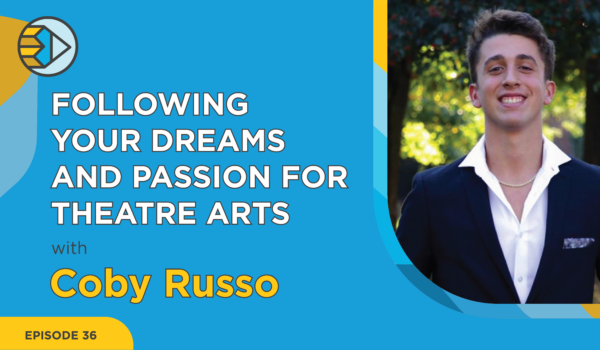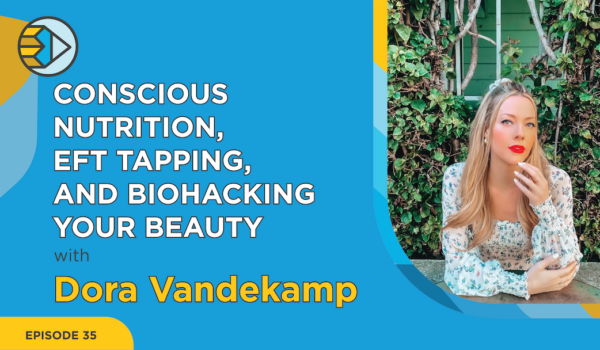
EP 15: How to Improve Your Grades on Multiple Choice Tests
In Episode 15, our Host & Top Writer Cath Anne showed how you can improve your grades on multiple choice tests. We all have to take these dreaded multiple choice tests throughout our academic lives, at some point, so it’s important to learn some of the most proven tips and techniques. We shared tips on how you can make sure to excel on your multiple choice tests.
Looking for study tips, help with essay writing, or advice on how to be a better student? Welcome to The Homework Help Show, a weekly show where we teach, assist, and offer valuable insights for student life. From study hacks to writing tips, discussions about student mental health to step-by-step guides on academic writing and how to write a resume, we’ve got you covered. Want your questions answered? Write them below or join the conversation on social media using the hashtag #askHHG
TRANSCRIPT:
Cath Anne: [00:00:06] My name is Cath Anne and I post the weekly Live Stream for the Homework Help Show. Today we’re going to discuss multiple-choice tests, not everyone’s favorite.
Cath Anne: [00:00:25] I did a poll earlier today when I did my stories and about 75 percent of folks that answered the poll said that they did not like multiple-choice tests.
Cath Anne: [00:00:38] So, sounds like a lot of folks do not care for multiple-choice tests. Yes, unfortunately I’m actually going to go try to go Live again on Instagram and to see if there are any more folks that want to join in.
Cath Anne: [00:01:01] So, as I mentioned we’re going to be talking today about multiple-choice testing. There are a lot of myths when it comes to multiple-choice tests and as I mentioned earlier many people don’t like multiple-choice tests. They find it difficult, they find hard. It’s just not a natural way of thinking.
Cath Anne: [00:01:31] Before I jump into the content I know I’ve already said this a few times, if you’re on Facebook Live with me, I’m just going to wait and see if a few more folks jump on Instagram. I just restarted the Live So, I’m going to see if that works to bring any more folks along. But, if not that’s cool too. We will move on with the content.
Cath Anne: [00:01:57] For the most part, for most folks, when you think about a multiple-choice test you think that you’ve heard the advice, just pick ‘C’. That’s probably the most common advice. It might just be ‘just pick C’ or ‘just pick B’, depending on where you heard the advice. Unfortunately, that is not the greatest advice in the world and I will tell you why. So, the reality is that cannot base your approach to multiple-choice tests on advice like that because then you are risking your grade. You don’t want to depend on getting only a 50 percent on your test.
Cath Anne: [00:02:52] Oh, my that battery is running low.
Cath Anne: [00:02:56] If you rely on that method. It’s just not a good method to rely on. I’m going to have to pause the video because my battery is running low on my computer.
Cath Anne: [00:03:09] When you answer the really hard questions first you get into an intensely focused mode and that’s great for doing complex and difficult mental tasks. But, there’s limited time that you can spend in this mode before your brain gets burnt out. So, the benefit of tackling these questions first is you get into that focus mode. Then when you move onto the easier questions you are giving your brain a break. So, by switching to an easier problem, you’re letting your subconscious mind work in the background while you are doing the easier questions. It can work on that hard problem in the background. This gives you a better chance of being able to answer the hard problems when you return to them later. So, basically what you’re doing is you’re working on the hard questions first. If you get stuck, move on to an easier one. This gives you a brain a little break, but you still have the hard question in your brain and your brain still working in the background. How cool is that.
Cath Anne: [00:04:06] The third tip I wanted to give you is make sure you read the question twice. I know this might sound obvious, but a lot of times because multiple-choice questions are So, quick to answer, we might just rush through reading them. Another reason for this is that especially nowadays we are So, conditioned to read things quickly that we don’t necessarily take in all the information that is being provided.
Cath Anne: [00:04:39] (To Instagram User): Hey Georgiana USA. We are just talking about how to ace your multiple-choice test. So, if that’s Something that interests you then I’m glad that you’re here. Thank you for joining us.
Cath Anne: [00:05:07] I just gave a couple of tips about how to ace your multiple-choice tests. One of them was when you first received the test, make sure to review it over in its entirety because Sometimes they give hints of the information that is to come. The second one is work on the difficult questions first because if you get stuck then you can move on to an easier one. It gives your brain a break to work on the harder question in the background while you’re working on the easier questions.
[00:05:47] (To Instagram Viewer): Do you have any exams or tests or are you a student? Oh, you have one tomorrow.
Cath Anne: [00:06:08] (To Instagram Viewer): What kind of test is it? Is it an essay-based test or a multiple-choice test? Neuroscience. Will there be short answer questions or it’s multiple-choice? Well these tips will hopefully be good for you. Are you feeling prepared for it?
Cath Anne: [00:07:05] Well since you’re here and since you have a test tomorrow I will just kind of go back over what I just said.
Cath Anne: [00:07:39] Make sure that you read all the questions because Sometimes the profs will give you the answers to other questions. It’s a good idea to kind of do a skim over the whole thing So, you know what to expect. Then if you do see one question that looks like another, there’s a possibility that the answer could be embedded within that question. Then work on the difficult question first because basically if you can’t get the answer to the difficult questions then you can move on to an easier question.
Cath Anne: [00:08:16] It allows your brain to have a bit of a rest So, that you can focus on the easier question, but your brain still actively working on the more difficult question in the background the subconscious mind.
Cath Anne: [00:08:30] By switching to the easier problem it gives your brain a bit of a break and takes it out of that really intensely focused mode and then you’re more likely to be able to come up with the answer.
Cath Anne: [00:08:43] I was just actually on the third tip that I wanted to give you. multiple-choice questions, as I was mentioning, are really easy to breeze through especially since we are used to going on autopilot and really consuming information very quickly. But, a lot of times the questions can be more complex than you think they are. If you’re going through things really quickly then you might not get the details in the actual question. So, some examples of questions that they might try to throw in there to throw you off. I’m not suggesting that they’re trying to trick you but they’re trying to make the questions a bit more complex.
Cath Anne: [00:09:47] So, some examples might be: ‘Which of the following is not?’ or ‘Mark all answers that apply’ or ‘Which of the following is most correct?’ That’s a challenging one. ‘All of the above’ or ‘None of the above’ are pretty common ones that you see in multiple-choice tests. A lot of the time when we’re rushing through, there’s the potential that we might confuse ‘All of the above’ or None of the above’. I’m definitely guilty of doing that in my undergraduate degree. So, just make sure that you’re reading the questions very specifically.
Cath Anne: [00:10:30] Then another really good tip is to double check your answers after each page. I always found that double checking my answers after completing a whole test was a little bit overwhelming. I would tend to rush it because I would feel like I was at the end of my time. But, I still think it’s really important for you to do that and make sure that you’re budgeting time to be able to check your tests. Always briefly double check your answers when you finish a page and then that will allow you more time at the end. If you don’t necessarily have time to check over the whole test, at least you’ve done it at the end of each page. When there is only a small amount of questions to check, it’s way easier to check your test for mistakes.
Cath Anne: [00:11:42] Another really cool tip that I like is to think about your style environment where you learned the information. This can actually help with recall which I think is really neat. So, depending on where you are studying, if you’re study in your comfy chair or your desk in your home room; when you’re going through a test try to picture where you studied. When you envision the place that you learned the material you take advantage of what’s called context dependent memory, which describes a phenomenon in which people are more likely to remember information when they’re tested on it in the place they learned it. So, basically what this means is that if you are studying information in a certain location and then you go back to that location and take a test on it you’re more likely to remember it. So, you can use this technique in your multiple-choice test if you think about where you actually learned that information. If you get stuck on a really hard question, try to recall where you were sitting when you learned the information and that should help you bring back that answer from your memory.
Cath Anne: [00:12:56] (To Instagram Viewer): I hope that helps you, Georgiana I really do. You’ll have to let us know if that was helpful for you. Where do you where do you study where. Where are you studying for neuroscience exam? Oh, U of T. In the library. So, yeah, basically if you are stuck on a really challenging question with your neuroscience, picture the exact little cubicle that you studied in when you were in the library and hopefully that’ll help you recall some of that information that you took in. What is your undergraduate program. I’m actually in the Maritimes now. Eastern Canada. Oh wow. Neuroscience Specialist. Good for you. That’s amazing. Neuroscience is very interesting. I didn’t take sciences I took sociology and I’m actually a social worker by profession but, neuroscience has always really interested me. I kind of regret not studying it more.
[00:14:50] So, those were the 5 tips. But, then I wanted to give you a secret weapon for your testing. (To Instagram Viewer): Yeah I really like sociology courses they are really interesting and they kind of it’s like appealed to me when I was doing my undergrad. So, I kind of stuck with that and my strengths are really with Sociology and languages but, I think neuroscience is very interesting. So, good for you.
[00:15:33] Now I wanted to talk about a secret weapon. What I mean by that is that when you’re doing a multiple-choice test you can actually rely on statistics to help you to figure out the answer to multiple-choice questions. Inevitably you’re going to come across questions on your test that you just straight up don’t know. They’re going to throw you out in left field and you don’t know the answer to them. It is just a natural part of taking a test. So, it’s possible that maybe you can narrow down your choices by eliminating answers that aren’t correct. But, occasionally you’re going to just run across a question that you literally know nothing about and that you have a difficult time narrowing down. So, in this case instead of randomly guessing, which I do not recommend, you can use statistics to exploit flaws in how humans rate multiple-choice test. So, we know from scientific experiments that True/False exams are truth biased. 56 percent of the time answers are true. While only 44 percent were false.
[00:17:08] So, if it’s between a true or false and you really don’t know the answer you can rely on statistics. Statistically answers will be true.
[00:17:25] A second statistic that you can draw on is that consecutive answers are the same letter are less likely. So, it is slightly likelier than not that an answers letter will differ from one from the one before or after it. So, what that means is that. If you’re trying to find an answer and you have it narrowed down between A and B and your last answer was in A then it’s probably likely that the next answer is not going to also, be A. So, you can rely on that in terms of making your decision.
[00:18:03] In tests where there were three choices per question, a question’s correct choice was the same letter as the previous question only 25 percent of the time, rather than the 33 percent that would indicate true randomness. This is also, true of two false questions. There was research done that found that answers alternate 63 percent of the time. So, basically when you are trying to narrow it down you can rely on the fact that, for the most part, questions do not repeat in their answers.
[00:18:43] A third tip is that there is a continuity of errors. So,. if the answer makes grammatical sense it is more likely to be true which is really cool.
[00:19:27] The last tip I wanted to give you, and this is a really big one because it occurs frequently in multiple-choice test, pretty much in all multiple-choice test a multiple times. It was found that ‘All of the above’ or ‘None of the above’ were correct 52 percent of the time when such an answer was present in the question. You have pretty good odds that you will get it correct if you pick that answer. So, that is another little tip for you.
[00:20:07] Some of these hopefully will help you to navigate those questions that you find really challenging. That is it for this week. I hope the session was a benefit to you and if you want to gain access to any content we always post it on our Facebook and we always post it on our YouTube channel. You can also, access us on Google Plus, SoundCloud Anchor, Apple iTunes, and Google Play Music. We are there in podcast form. If you’re interested in accessing any of Homework Help Global’s services we are on Twitter, LinkedIn, we are on Instagram, and we are on Medium, we do some blog posts on there, So, we are all over the place. If you’re looking for this content, we will be leaving it up on our Instagram page for the next 24 hours and we’ll also, be having it on our YouTube page and our Facebook page. So, if you want to access any of these other materials feel free to check us out there and otherwise I will see you next week. This is the Homework Help Show. We do this on a weekly basis. A live stream on Instagram live and Facebook live usually on Tuesdays at 7:00p.m. Eastern Standard Time, although it has shifted this week, but next week we will probably be back to Tuesdays at 7:00p.m. Eastern Standard Time. Next week we’re actually going to be doing a demonstration of how to use the application Anky which is a really cool study application that can help you use flashcards. So, I’m going to develop a series of flashcards with you guys. Which is going to be really cool So, tune in for if that’s something you’re interested in and I’m going to show you how to use flashcards to improve your study methods. So, I really look forward to seeing you guys next week, and I hope this was helpful. Good luck on all your tests. I know there are tests and exams and papers coming up So, good luck to everyone and I will talk to you soon.
Share:

